Learn how to cut a pomegranate with this essential guide, including how to pick a ripe pomegranate, how to juice a pomegranate and my favorite pomegranate recipes. No stained cutting boards, no red-spattered shirts, no mess!
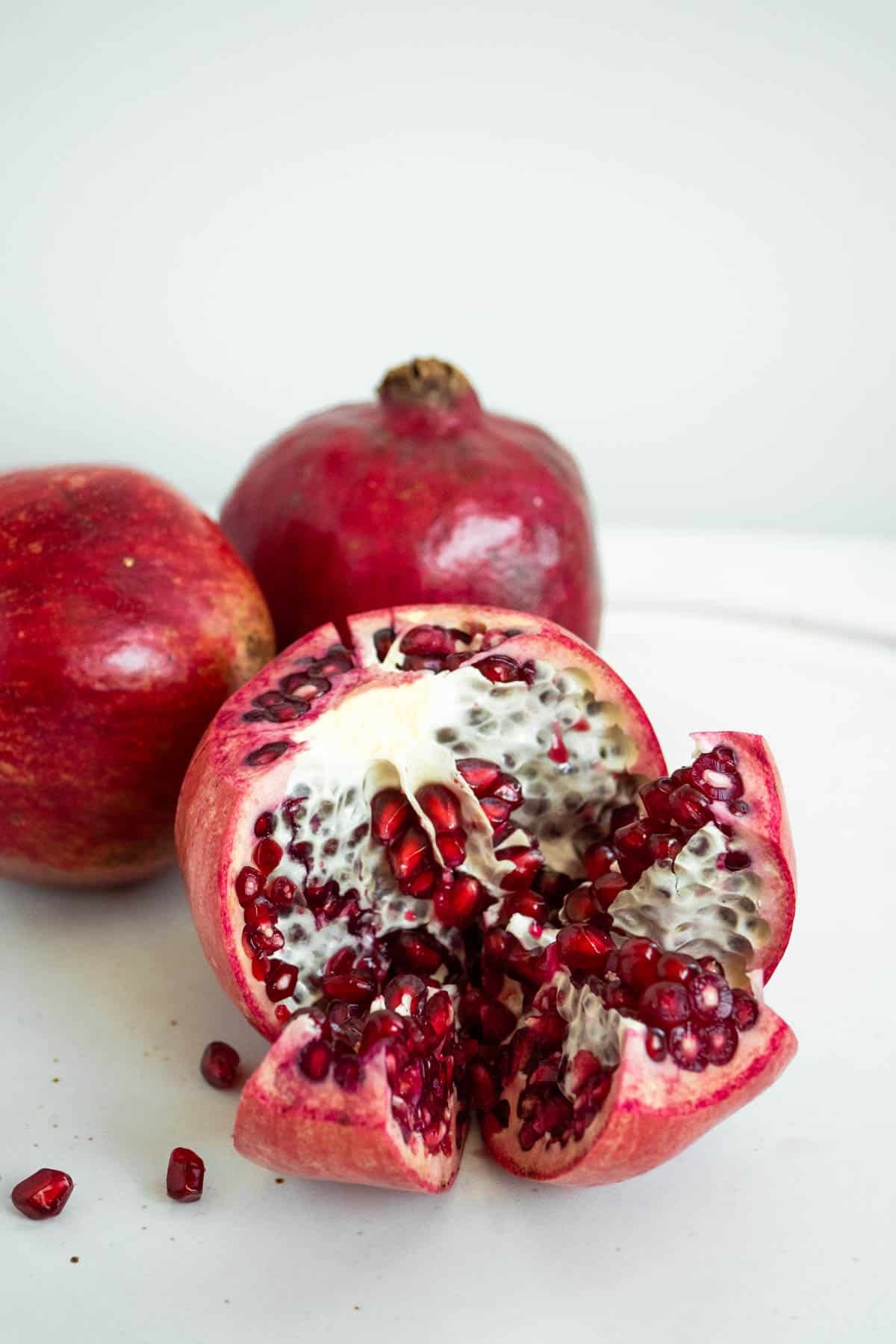
Learning how to cut a pomegranate is an incredibly useful skill to keep in your arsenal, particularly if you’re following the Mediterranean diet. Pomegranate seeds, or pomegranate arils depending on where you live, are a beloved essential ingredient across Mediterranean, Middle East, and North African cuisine.
The small bright red seeds are little flavor explosions, bursting with tart, sweet, and slightly earthy juice with each crunch. A cup of fresh pomegranate seeds is culinary gold: you can snack on them, toss them in salads, add them to stews or dips, or use them as a garnish for roast meat, cauliflower, and fish. You can even juice them to make pomegranate molasses or pomegranate martinis!
While the plastic tubs at the grocery store come in handy in a pinch, they’re far more expensive and less flavorful than the real deal. And you’d be surprised how easy it is to cut a pomegranate once you know this simple method.
Table of Contents
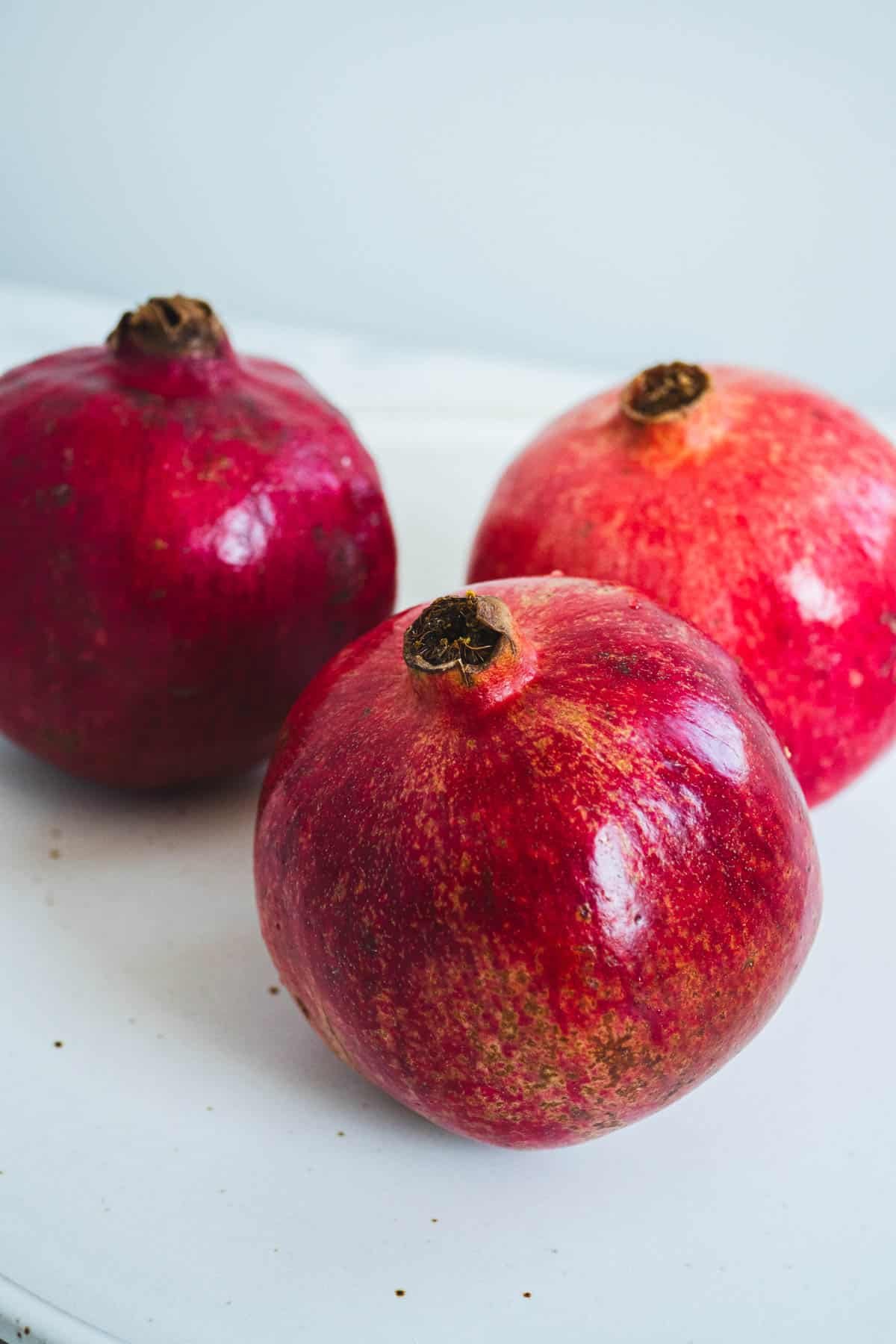
How to Pick a Pomegranate
Like watermelon or pineapple, pomegranate is tricky to judge until you cut into it. There are, however, some good signs of ripeness. Here’s what to look out for:
- Color: Look for a deep red color all over the fruit. This is not a hard-and-fast rule, as some brownish pomegranates are ripe, but a deep red is typically a good sign.
- Tight, firm skin: Mushiness or big cracks indicate spoilage.
- Weight: The juicier the pomegranate, the more it’ll weigh. Look for pomegranates that feel heavy for their size.
There’s nothing worse than cutting into a beautiful looking pomegranate and seeing brown seeds! If you’re making something that requires fresh pomegranate seeds, I always recommend buying at least three. You can always freeze the seeds for later (tips below).
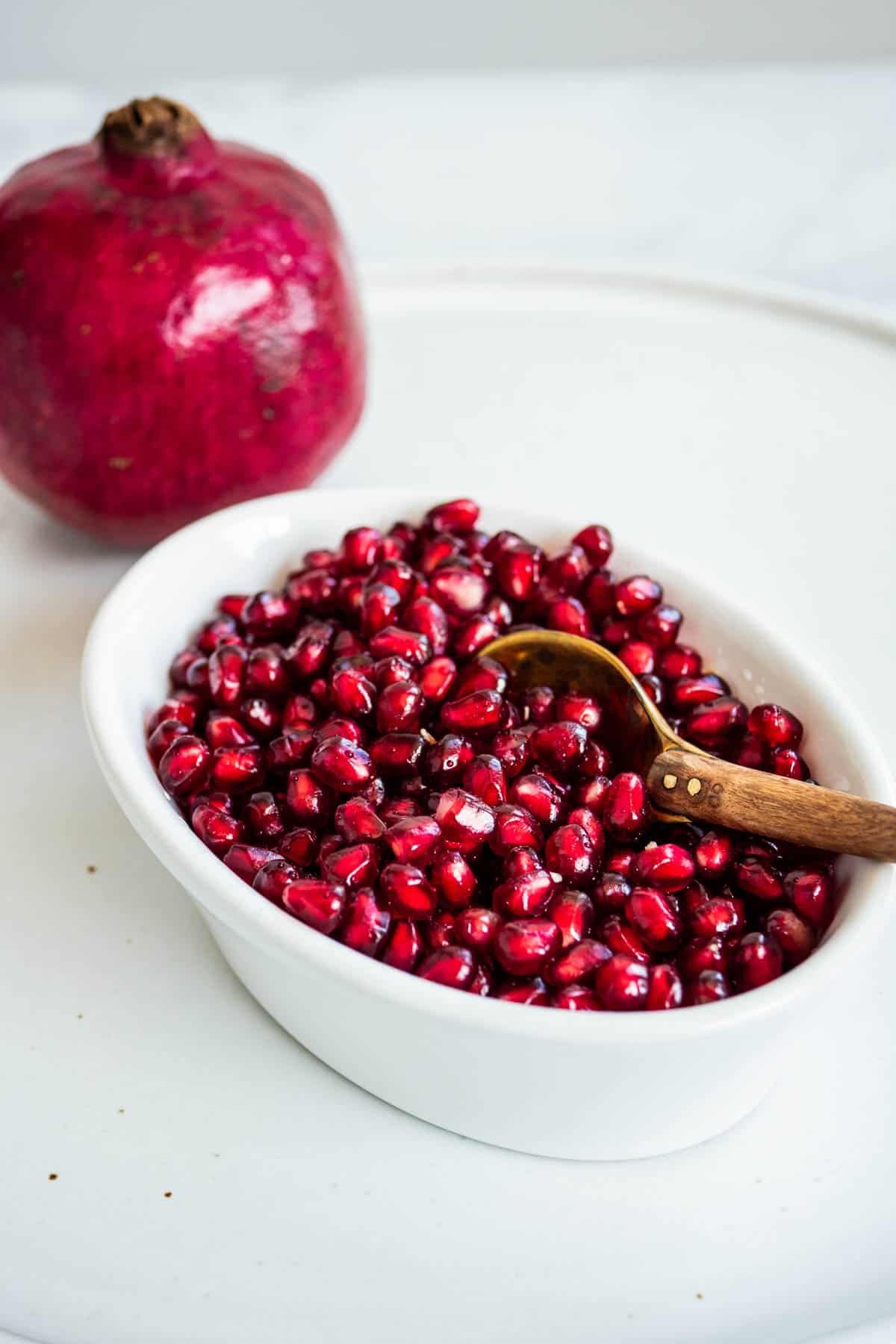
How to Cut a Pomegranate
I tested many, many ways to cut a pomegranate, including trendy "hacks" where the person simply hits the back of the fruit very hard with a wooden spoon. Short story: I’m convinced these techniques are mostly made for social media. My beautiful chef’s apron was splattered with red juice and I got maybe ten seeds out of the fruit. Here is the best, easiest, and cleanest method (for real):
- Get ready. Fill a large mixing bowl with cold water.
- Slice off the top. Use a small, sharp knife to draw a circle along the top of the pomegranate, piercing just through its skin. Peel off the top with your hands and discard.
- Section the pomegranate. Look at the top of the pomegranate–you should see the white pith making a star-like shape at the top. These are the different sections. Run your knife from top to bottom of each section, piercing just the skin of the pomegranate.
- Add the sections to the water. Flip the pomegranate upside down over the bowl of water. Push on the bottom of the pomegranate with your thumb to open it, then pop out each section into individual pieces.
- Remove the seeds. Carefully peel back any thin white pith covering the seeds. Then, with the pomegranate submerged in water, very gently run your thumb along the peel to remove the seeds. If you notice any stubborn pith or peel sticking to the seeds, remove it.
- Skim off the pith. Most of the seeds will sink to the bottom of the water, with the white pith floating at the top. Skim off and discard the pith, then drain.
How to Juice Pomegranate Seeds
To juice a pomegranate you can, of course, transfer the seeds to a fancy juicer. But you don’t need one to make pomegranate juice. You have two options to juice pomegranate by hand:
- Use a hand juicer (messier): Cut your pomegranate into pieces small enough to fit into your juicer. Working with one piece at a time, add each piece to the juicer with the cut side facing down. Squeeze steadily into a large bowl. Fair warning! There will likely be splatter.
- Use a plastic bag. Set a fine mesh strainer over a large bowl. Place the pomegranate seeds into a large sealable plastic bag (do this in batches if you have a lot of seeds). Seal the bag, pushing out most of the air as you go. Use a rolling pin or heavy pan to whack the seeds, bursting them and releasing their juice. Pour through the strainer into the bowl, reserving the juice and discarding the small crunchy part of the seed.
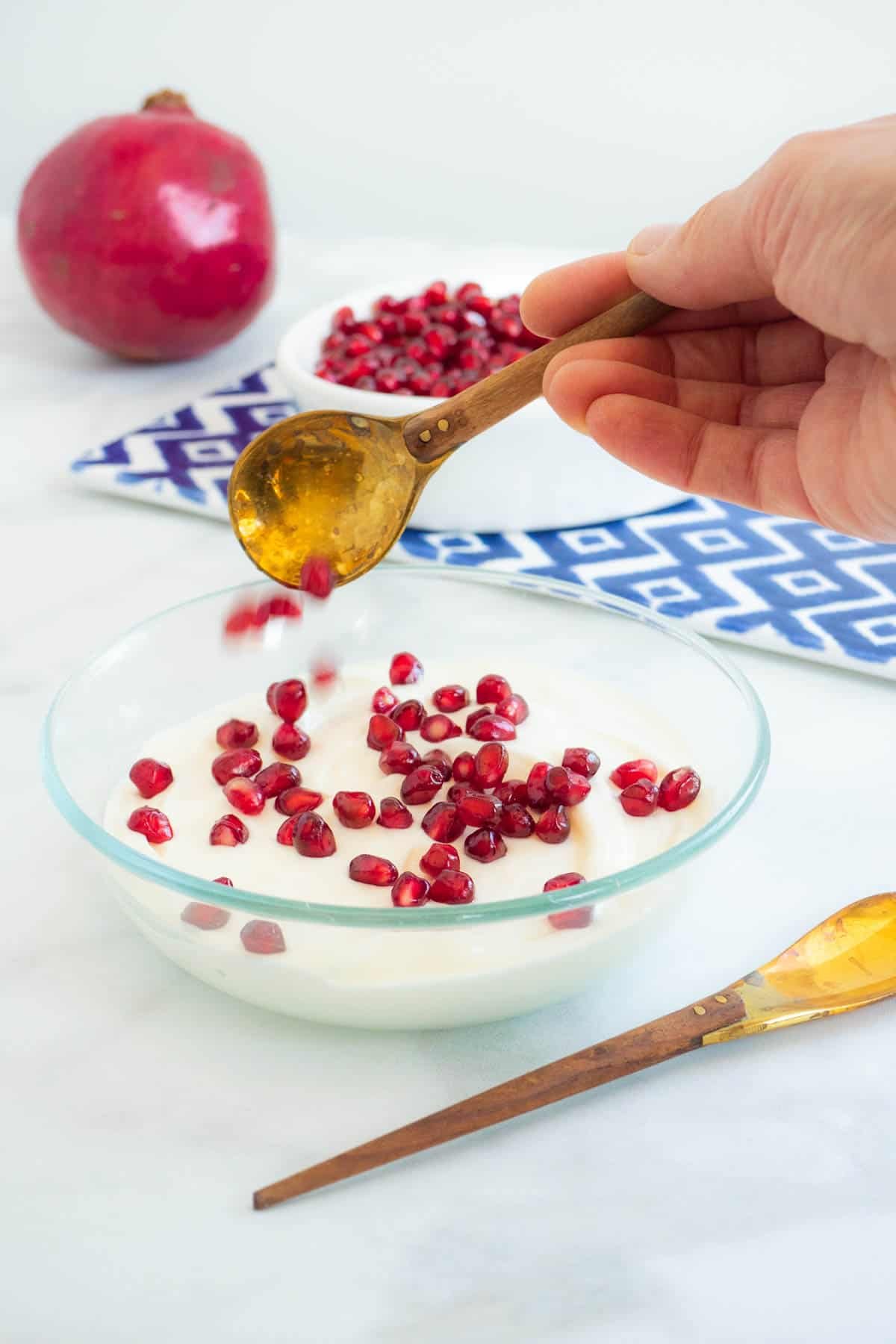
How to Eat Pomegranate
You can eat the whole pomegranate seed, crunchy bit and all. Pomegranate seeds have two parts: the tougher interior and the juicy red fruit, called the “aril,” that surrounds it.
It may seem strange to eat the crunchy seed, but think of passionfruit, figs, raspberry, blueberries, grapes, strawberries, and more! The small crunchy seeds are completely edible. In fact, according to the FDA, whole pomegranate seeds boast 4 grams of fiber compared to 0.1 grams in the strained juice.
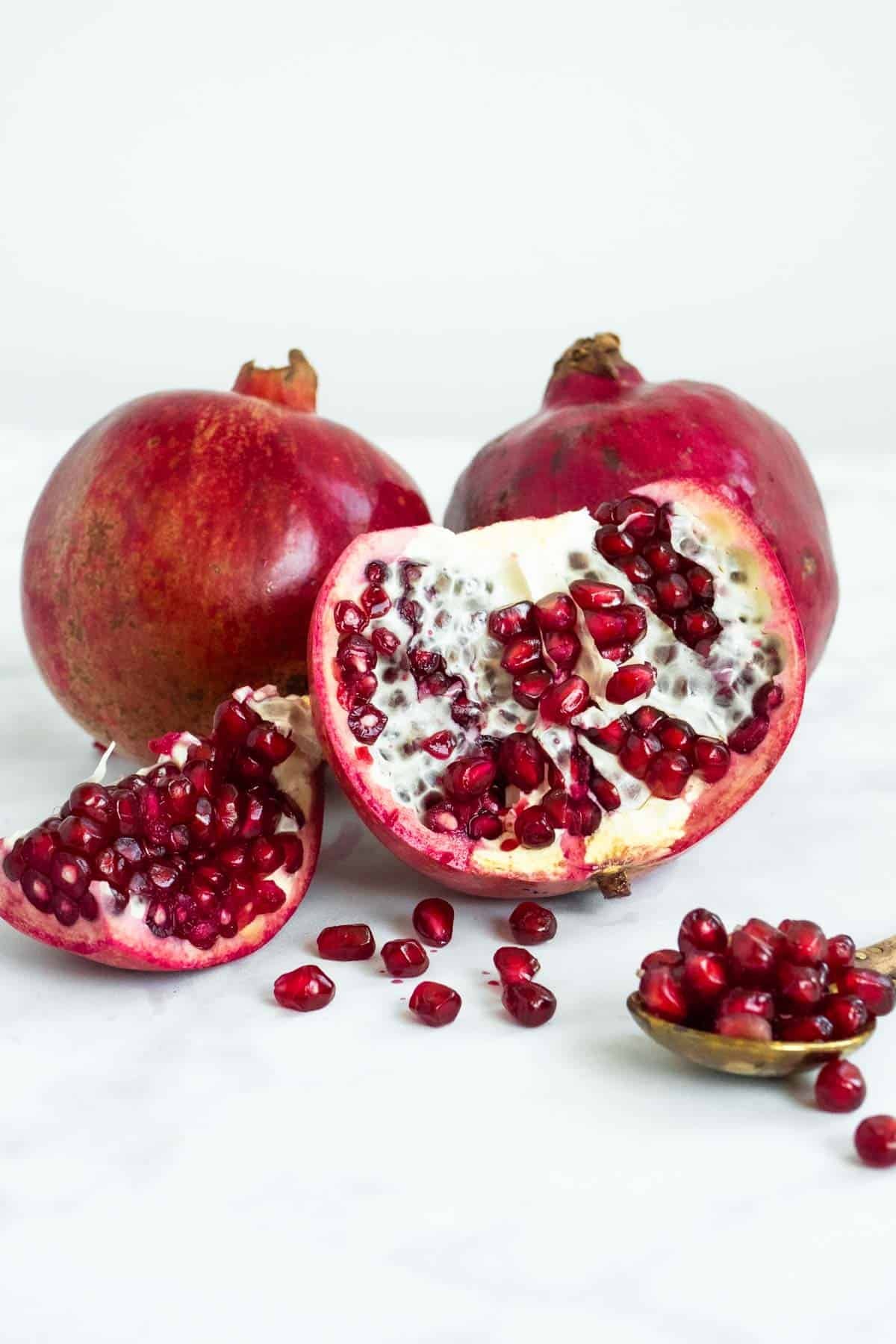
How to Use Pomegranate Seeds
You can snack on pomegranate seeds whole, with a spoon, or straight from the shell like an orange wedge. In addition to being a snackable treat, pomegranate seeds, juice, or a thick syrup called pomegranate molasses provide a key flavor to many Mediterranean recipes. Here are some of my favorite ways to use pomegranates in my cooking:
- Make pomegranate molasses. A pantry staple in many parts of the Mediterranean region, pomegranate molasses brings an intensely tart, sweet, and slightly earthy flavor to a wide range of both sweet and savory dishes, from Fesenjan (Persian Pomegranate and Walnut Chicken Stew) to Muhammara (Roasted Red Pepper Dip). You can make it yourself from fresh-squeezed pomegranate juice (or save some time with a trip to our shop).
- Add to salad for bright and tart bursts of flavor. I use crunchy pomegranate seeds like a crouton for fruit salads in both winter and summer. They’re also delicious tossed with any salad, like arugula chicken or spinach mango.
- Add to grain and legume bowls. Give protein-packed lunches or sides an antioxidant boost, like lentil salad with couscous or cucumbers and spinach and black-eyed pea salad.
- Top stuffed or roasted vegetables. Both decorative and tasty, pomegranate seeds make a great garnish for stuffed eggplant and acorn squash, along with whole roasted eggplant and cauliflower.
- Roast meat and fish. The vibrant acidity, earthiness, and slightly sweet seeds are a beautiful match for savory roast meats and fish, like chicken, salmon, or beef.
- Shake into cocktails. Mix up your happy hour with a vibrant red pomegranate martini. Or, for a non-alcoholic/kid-friendly option, try this Spiced Pomegranate Fizz Mocktail.
- Add to yogurt for a quick and healthy breakfast. Top Greek yogurt with seeds, perhaps with granola and a drizzle of quality honey.
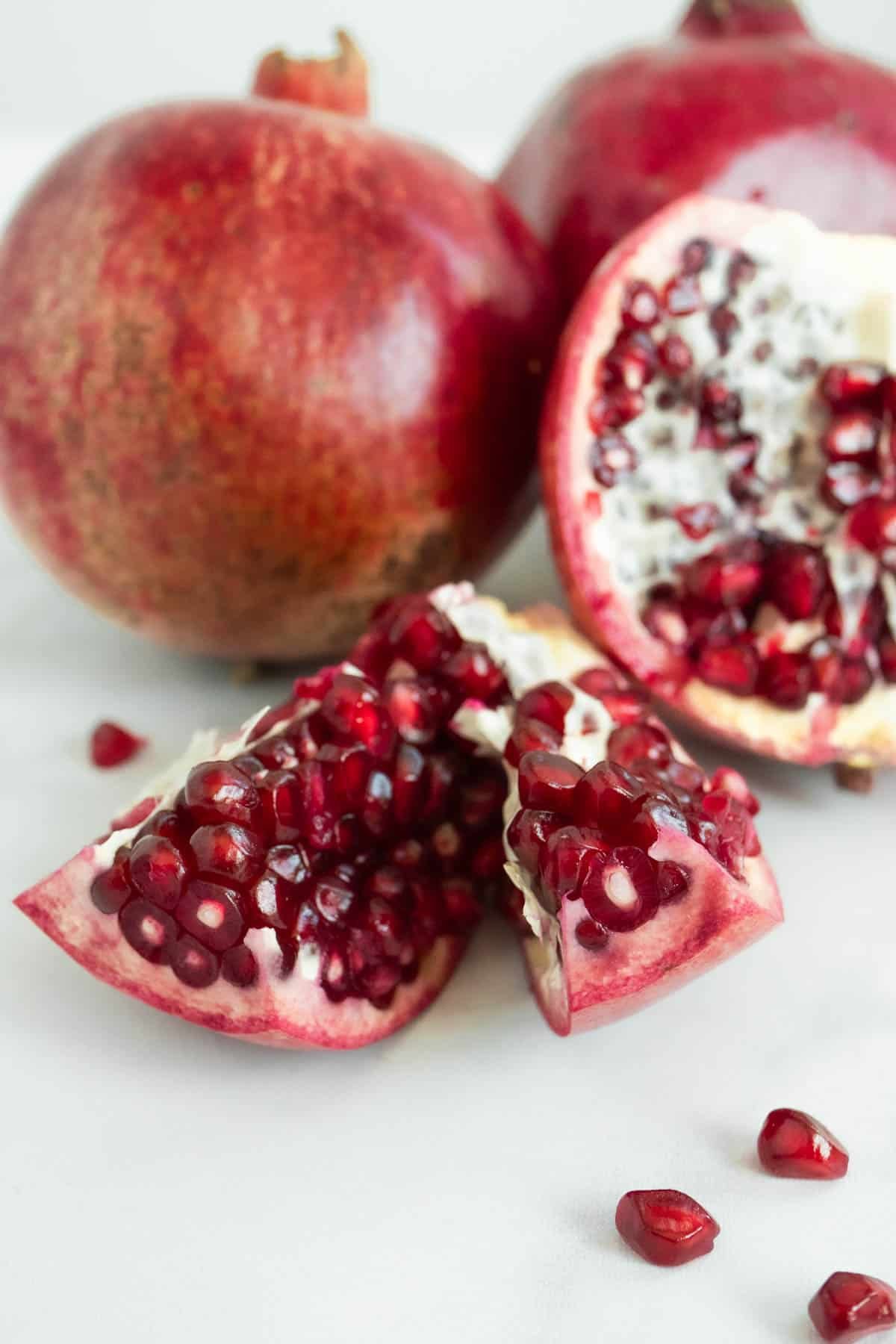
How to Store Pomegranates, Pomegranate Seeds, and Pomegranate Juice
The key to juicy, tart and sweet pomegranate seeds is storing them well so they stay fresh. Just like storing herbs correctly, they’ll last longer and taste better.
- To store whole pomegranates: Keep them in a cool, dry place until they’re heavy with a deep red color, which means they’re fully ripe. Use them or move them to your refrigerator at that point.
- To store pomegranate seeds: Transfer to a sealable container and refrigerate for up to one week or freeze for up to 6 months. (People will tell you to spread them on a sheet tray first if you’re freezing them. You don’t need to do that, they won’t stick.)
- To store fresh pomegranate juice: Transfer to a sealable container and freeze for up to 6 months, or refrigerate for up to 5 days.
Try Pomegranate Seeds in These Recipes!
Meat and Poultry
Pomegranate Chicken Thigh Recipe
Mediterranean Diet Recipes
Easy Mediterranean Orange and Pomegranate Salad Recipe
Sides and Small Plates
Jeweled Couscous Recipe with Pomegranate and Lentils
Browse all Mediterranean recipes.
Visit Our Shop.
Try Our Pomegranate Molasses!
This 100% natural Pomegranate molasses packs an intense burst of sweet and tart flavor.
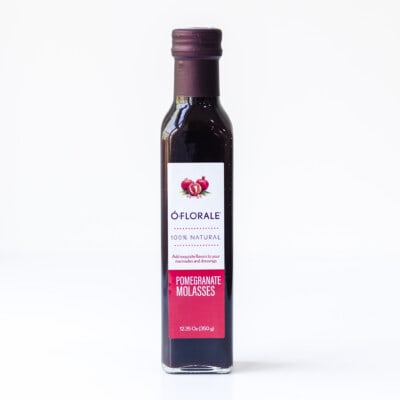
How to Cut a Pomegranate
Materials
- 1 Pomegranate (to yield about 1 ½ cups seeds)
Instructions
- Get ready. Fill a large mixing bowl with cold water. Work over this mixing bowl to keep your kitchen clean.
- Slice off the top. Use a small, sharp knife to draw a circle along the top of the pomegranate, piercing just through its skin. Peel off the top with your hands and discard.
- Section the pomegranate. Look at the top of the pomegranate–you should see the white pith making a star-like shape at the top. These are the different sections. Run your knife from top to bottom of each section, piercing just the skin of the pomegranate.
- Add the sections to the water. Flip the pomegranate upside down over the bowl of water. Push on the bottom of the pomegranate with your thumb to open it, then pop out each section into individual pieces.
- Remove the seeds. Carefully peel back any thin white pith covering the seeds. Then, with the pomegranate submerged in water, very gently run your thumb along the peel to remove the seeds. If you notice any stubborn pith or peel sticking to the seeds, remove it.
- Skim off the pith. Most of the seeds will sink to the bottom of the water, with the white pith floating at the top. Skim off and discard the pith, then drain.
Notes
- If you’d like to juice the seeds but don’t have a fancy juicer, you have two options:
-
- Use a hand juicer (messier): Do not remove the seeds. Cut the pomegranate into sections, then slice across if necessary to make pieces that fit into your hand juicer. Add piece-by-piece to the juicer with the cut side facing down. Squeeze steadily into a large bowl–be careful, there may be splatter.
-
- Use a plastic bag. Set a fine mesh strainer over a large bowl. Remove the pomegranate’s seeds and transfer them to a large sealable plastic bag (do this in batches if you have a lot of seeds). Seal the bag, pushing out most of the air as you go. Use a rolling pin or heavy pan to whack the seeds, bursting them and releasing their juice. Pour through the strainer into the bowl, reserving the juice and discarding the small crunchy part of the seed.
- Storage: Store pomegranate seeds or juice, sealed in your refrigerator, for up to 1 week. Freeze for up to 6 months. (People will tell you to spread them on a sheet tray first if you’re freezing them. You don’t need to do that, they won’t stick.)
- Visit our shop to browse quality Mediterranean ingredients including olive oils, honey, jams, and spices.



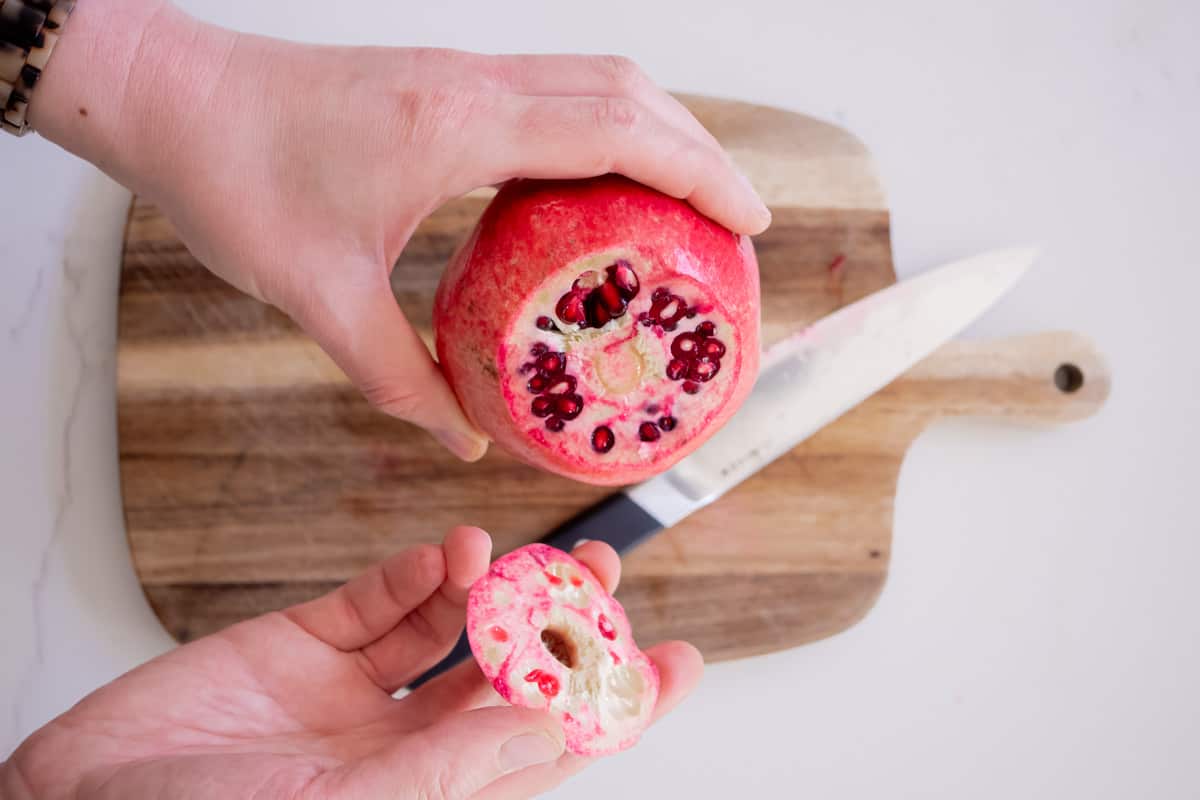
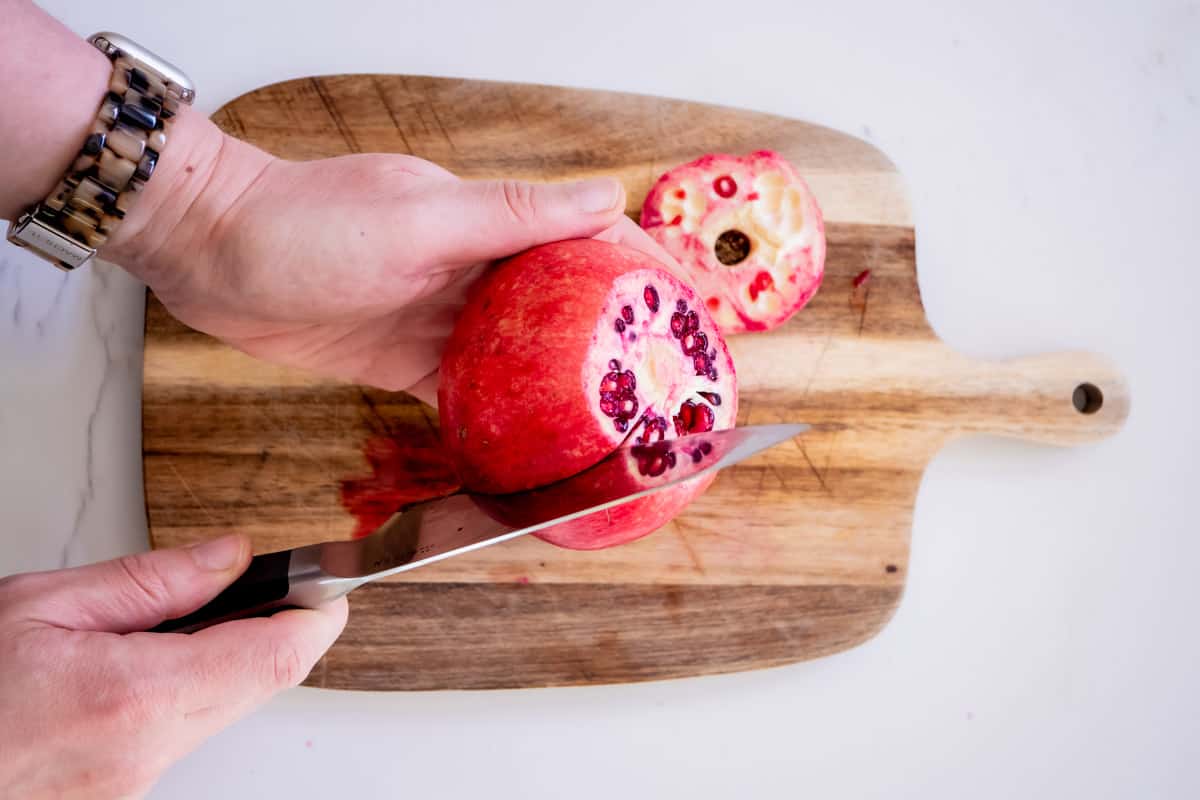
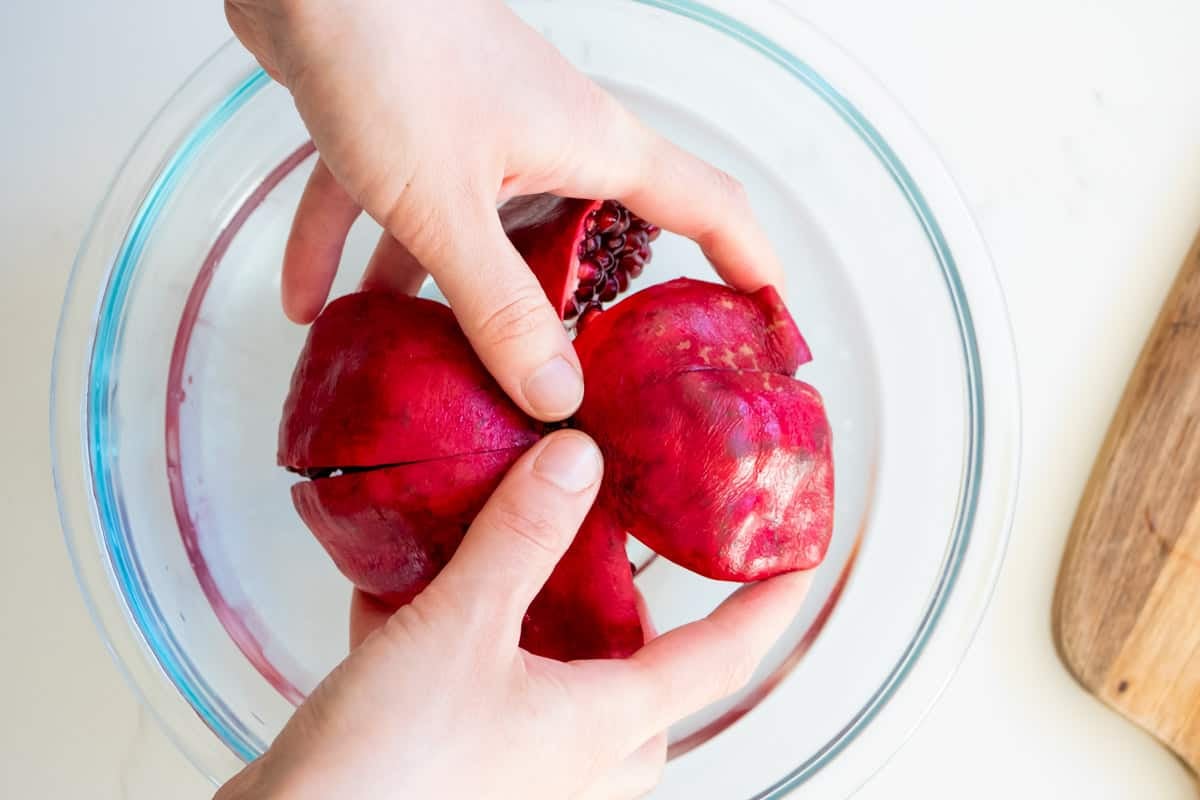
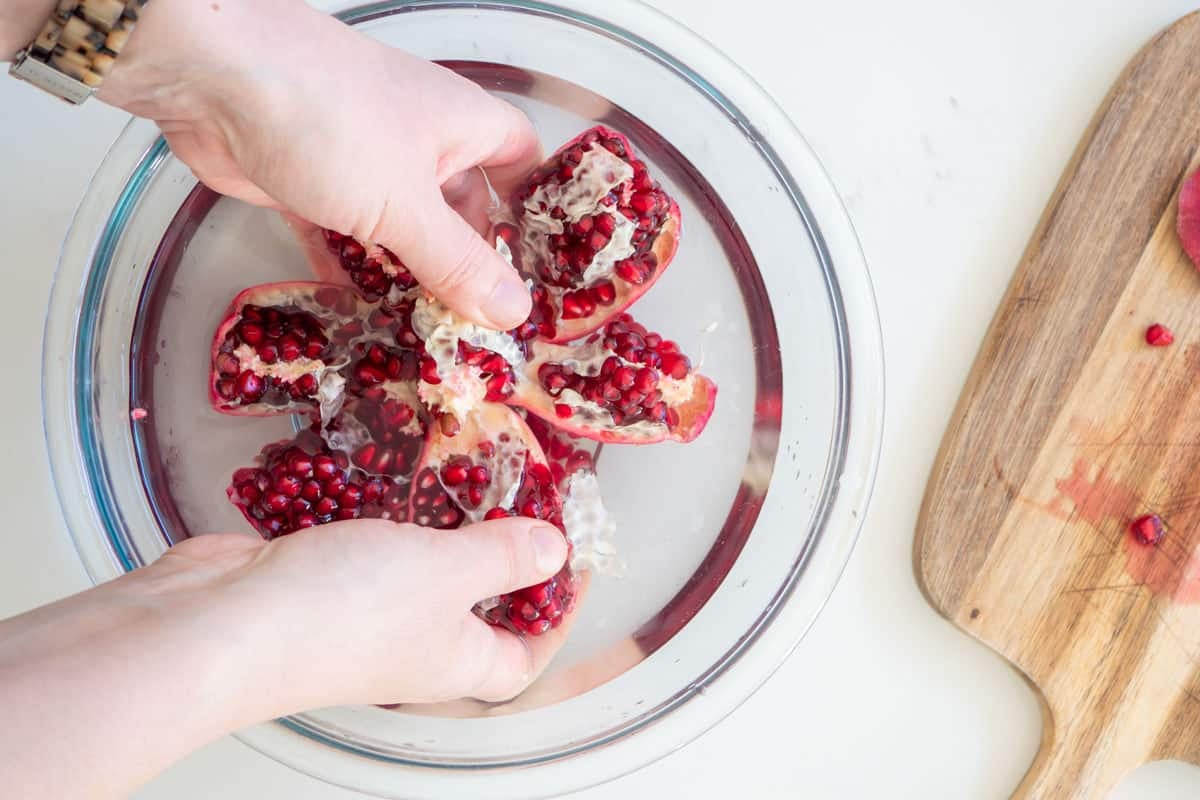
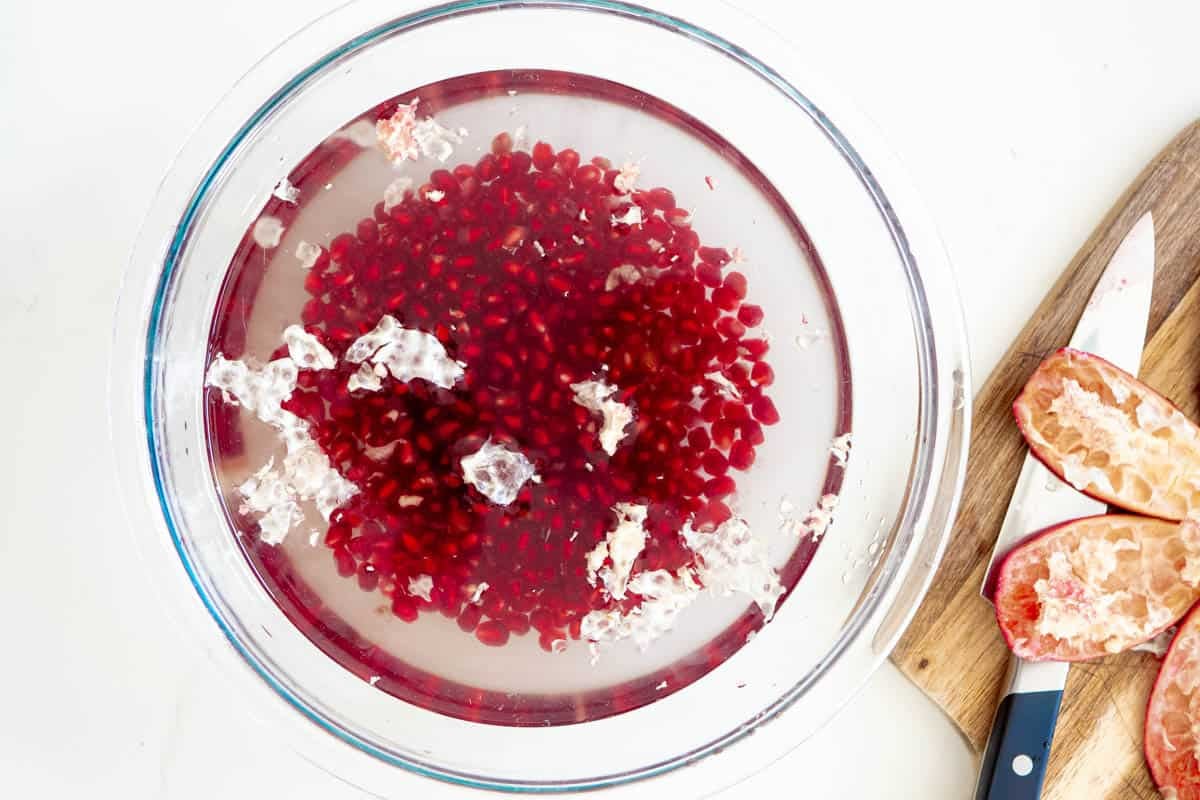


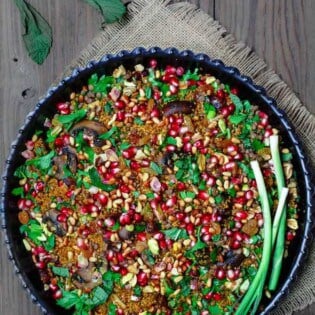

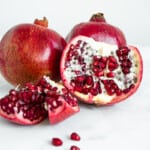
When I turned it over per step 4 I said "it worked"!! First time doing this - so glad I read through recipe and printed up the instructions. It was easy - thank you!!